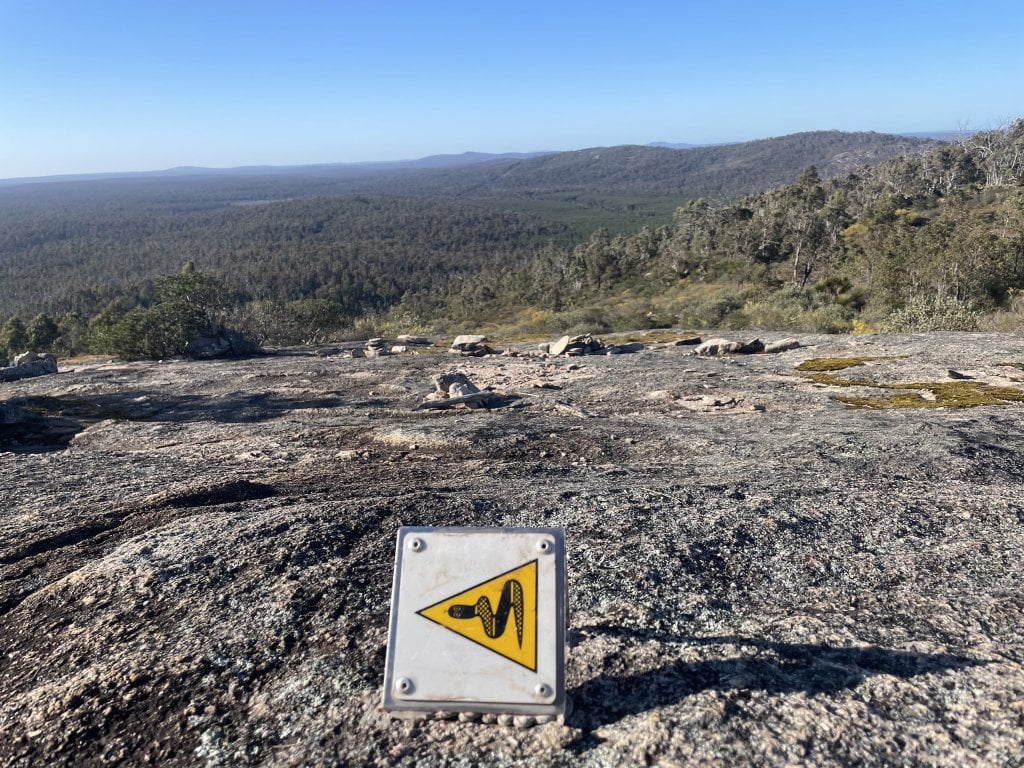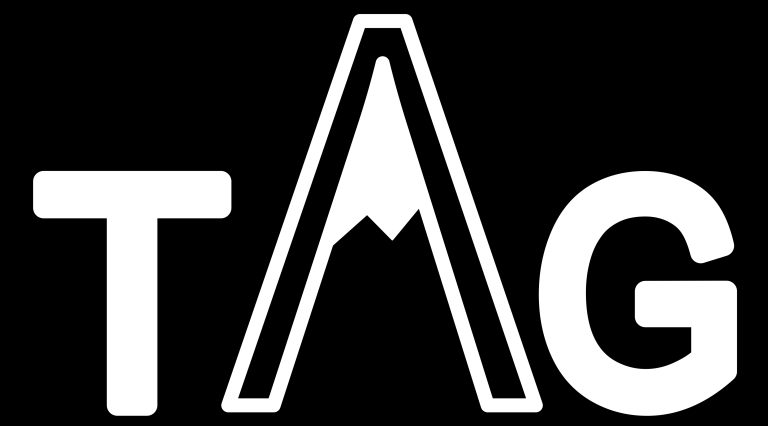Bibbulmun Track FKT Tactics
To me, Fastest Known Time (FKT) tactics are somewhat of a mysterious voodoo art. FKTs feel like the wild west of exploring physical and mental limits in settings that aren’t well understood. This is what excites me about FKTs and partly why I returned for my second FKT only 8 months after my first. Innovations in training and execution mean that records are constantly being broken. This is in contrast to events such as the marathon where training and records improve incrementally, and have largely been nailed down by science.
To some extent, developing FKT tactics must always remain an individual journey of self-discovery. Not everyone responds to the same mental and physical stresses, or has the same psychology or motivation in the event. However, there are many tips and tricks that are passed down in an ‘oral history’ between the small number of members in the community.
This is my second post documenting FKT tactics I have used. Compared to my previous post, I would describe most changes as small but important.
Before reading any further, it would be useful to have at least skim-read the trip report and gear list which are companions to this post. Also, if you are contemplating an FKT feel free to get in contact and it’d be great to discuss how to get you over the line! I would be most helpful for the Bibbulmun or AAWT, but we can chat about any track.
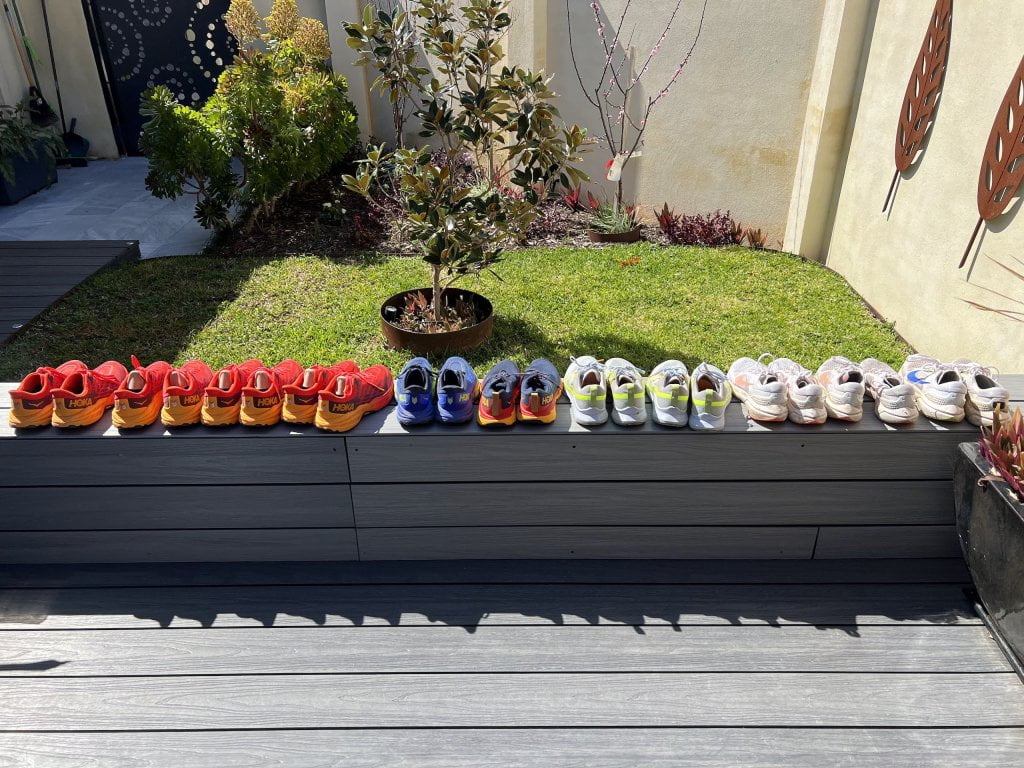
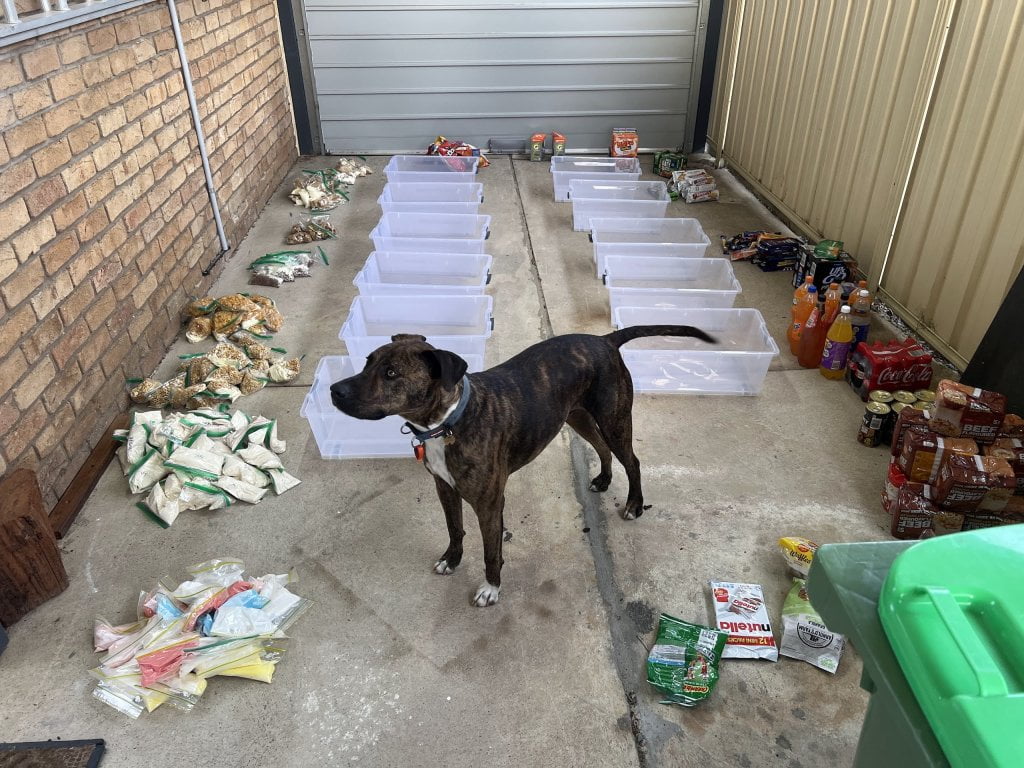
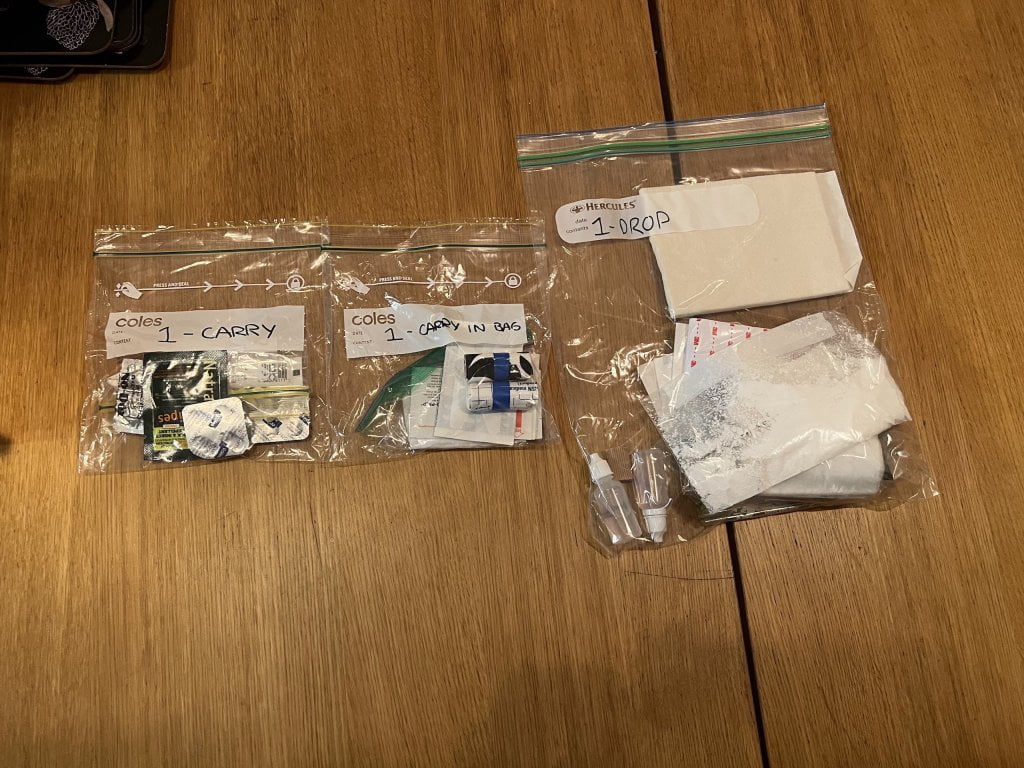
Run or walk?
I thought I’d start with a question many people have asked.
Person: “Are you really only walking? Surely you must be running some of the way!”
Me: “Just walking! I think I’d struggle to run and carry all my gear at the same time. I’d worry about injuries and not finishing.”
As I discussed in the Pacing section of my last tactics post, I think running is a high risk strategy that isn’t quite needed yet to break most long self-supported FKTs (e.g. 10 days or longer). My GPS recorded me walking over 80km/day, and I did that with an average of 4 hours of sleep per night.
For me, I think there are easier and less risky ways than running to increase how much distance I can cover in a day. I think the easiest ways to improve are learning to walk faster when fatigued, and improving footcare methods. For example, I was able to walk 100km in 17.5hrs on the first day. On subsequent days, I was primarily slowed down by sleep deprivation, muscular fatigue, and foot problems (both slowing my walking pace and increasing stopping time). Muscular fatigue and foot problems are only exacerbated by running, although you could argue that moving faster and sleeping more would be beneficial.
Pain killers and caffeine
It’s fair to say that pain killers and caffeine played a massive role in this FKT. On my previous FKT I was more conservative with pain killers and caffeine, aiming to use them ‘as needed’. I was astounded by their impact and on this trip I wanted to test a more aggressive strategy.
Specifically, I started by taking 200mg of ibuprofen every 4 hours. Referencing dosage advice for arthritis, I slowly ramped up to a maximum of 3200mg/24hrs. Although the analgesic effects are nice, the main reason I preemptively took ibuprofen was to manage inflammation. On my last FKT I waited until around day 6 to take any ibuprofen. By that point I looked a bit like the Michelin Man which was very painful.
I would consider this high-dosage ibuprofen experiment a success as I had only mild swelling around my knees and ankles. I also don’t believe I have suffered any long term consequences.
In the second half of the trip I introduced paracetamol (acetaminophen), ramping up to the recommended maximum dosage of 4000mg/24hrs.
On this trip I wasn’t as careful or measured with my caffeine intake. In each town I would buy the strongest, largest coffee I could and would fill a soft flask with an energy drink. Sometimes I would use caffeine tablets to push through the mid-afternoon slump and during the night. The amount of caffeine I took each day varied, but didn’t exceed 800mg/24hrs (i.e. around 8 normal coffees). Withdrawing from caffeine after finishing was tough and it took me about a week before I could avoid caffeine without headaches.
Foot Preparation
Foot preparation was very similar to last time. In the two weeks leading up to the FKT I filed down callouses and moisturised my feet at night. A few days before the FKT I trimmed my nails and filed them smooth. The aim was to have soft feet with healthy skin, and no rough or pointy surfaces (e.g. callouses or poorly cut nails).
The main difference in foot preparation was that I also used antifungal (clotrimazole 1%) and antibacterial (benzoyl peroxide 5%) creams in the week before starting. The purpose of this treatment is to reduce the amount of bacteria and fungus on your skin that can grow rapidly when your feet are damp/wet for 20hrs/day.
Shoe Choice
For this trip I decided to use Hoka Speedgoat 5 (SG5) trail running shoes. Compared to the Nike Vomero 15 road running shoes I used last time, they weigh about the same (~280g/shoe), have more cushioning, a wider toe box, and a different rocker shape (which I prefer). Being trail shoes, they also have better grip and a toe guard. I didn’t notice the difference in grip, but the toe guard certainly saved me from a few bruised toenails.
This trip was also the first time I used a wide shoe (2E width). After the 4300km long PCT, I was convinced that my feet had changed shape. They were flatter and wider, and many of my normal hiking and running shoes (D width) now felt cramped.
I also liked the Hoka SG5’s in 2E because they had lots of volume to let my feet expand due to swelling. Commonly people recommend going up 1/2 a shoe size to combat the effects of swelling. To me, increasing shoe width makes more sense as I find my feet don’t get longer, they just become wider and taller.
Although I did run into foot problems, they were relatively minor compared to my last FKT and I would very happily use the Hoka Speedgoat 5’s again.
To prepare my shoes, I placed ENGO patches in places where I typically get blisters (see photos below). Since the last FKT, I have tested ENGO patches extensively and am thoroughly convinced of their crucial role in blister prevention and management. Stay tuned for a full review.



Sock Choice
For this trip I primarily used Injinji toe socks. I have switched from normal socks to toe socks many times and at the moment I’m back on the toe sock train. I like being able to move my toes independently and don’t get toe blisters using them. Specifically, I wear the Injinji liner model by themselves as they’re thin. I find thick socks are too hot and take longer to dry out. The thicker toe sock models also increase the overall width of your toes. This can cause a cramped toe box and pinky toe blisters. With my 2E width SG5’s I didn’t have any trouble with space.
The other type of sock I used was the ArmaSkin long liner socks. I’m a big fan of these socks as your feet feel much cooler whilst using them and find them effective in reducing blisters (stay tuned for a full review). However, I sometimes get toe blisters with them even using Gurney Goo. There is a toe sock model but I didn’t have enough time to test them before the trip. You also can’t use lubricants with these socks (apart from between toes) which means you can’t moisturise your feet whilst walking (see lubricants discussion below).
Footcare During FKT
Lubricants
As you can tell from the Footcare Consumables section of the gear list, I had lots of different tools to look after my feet. Every morning I would apply either a lubricant (Gurney Goo) or a moisturiser (Aquaphor). I’m still not sure which one is better to use in the morning. Gurney Goo is lower friction, antibacterial, longer lasting, and protects your feet more in the wet. However, Aquaphor is much better at moisturising and helping the skin heal. It’s tough to balance the short term increased protection of Gurney Goo with the long term moisturising benefits of Aquaphor. Either way, I would reapply as needed throughout the day (every 6-10 hours as required and if I remembered). At night I would lather my feet in Aquaphor and sleep without socks to let them breathe.
ENGO Patches
After lubricants, my next line of defence was using ENGO patches. I had already preemptively applied ENGO patches to places I normally get blisters. However, over the trail I added several ENGO patches to other places in my shoes. The most important was in the forefoot area. The heat in the middle of the day combined with hard walking surfaces meant that I often felt like I was walking on hot coals. The ENGO patches greatly reduced the pain.



Adhesive Felt
A big discovery on this trip was the usefulness of adhesive felt. Felt was recommended to me by a podiatrist. I didn’t really expect to use it but packed it anyway. In the end, I wished I packed more. A lot more.
I think that adhesive felt represents an area of foot care and injury management that isn’t well explored by the hiking community. From my perspective, the appeal of adhesive felt is that you can stick it either under or on top of your insole to subtly modify your footstrike pattern. From an FKT perspective this has two uses.
The first is to deflect pressure away from blisters or pressure points. When I developed a heel edge blister I was able to successfully place felt under my insole to avoid antagonising this blister. It also meant I didn’t need to pop it and the blister could heal faster.
The second reason to modify your footstrike pattern is to avoid overuse injuries. In the second half of the trip I had trouble with forefoot pain. I didn’t have any blisters and the pain was caused by repetitive stress. I used the felt to direct pressure away from my forefoot and towards the arches of my feet. On some days, this allowed me to walk over 1km/hr faster.
For me, this second concept is exciting and potentially game changing. I can imagine a scenario where you carry multiple sets of insoles each with different load patterns. For an 18hr walking day, you could then rotate insoles throughout the day to shift the focal point of repetitive stresses. This could reduce overuse injuries and blisters (which are both defining parts of FKTs!). Felt is a convenient way to do this as the changes aren’t as drastic as using different brands of insoles. I’m sure there are other (better) ways to achieve this goal, but I haven’t tested any yet.
Tapes
On this trip I precut all of my tape to save time. This includes Fixomull, KT tape, and Leukotape. The KT tape is best for most uses as it is stretchy, sticks well, and applies easily. Fixomull is good when KT tape is too thick, and to apply under Leukotape to protect your skin. Leukotape does not stretch and is the most effective at protecting your skin in the short term. However, this comes at the cost of breathability and is harder to apply. I also used Skin-Prep wipes to help tape stick to my feet.




Training & Preparation
It’s fair to say that I had pretty good physical preparation leading into this FKT. In the last year I had hiked 6000km including a previous 11 day FKT. By the end of the PCT and 6 weeks before the Bibbulmun, Maddie and I were comfortable walking 50-60km/day without any troubles.
The 6 weeks after finishing the PCT I walked less than 100km in total. I spent most of the time eating, sleeping, relaxing, or preparing for the FKT. I knew I had the physical fitness, but was my mind fresh enough to give a max effort?
Having had time to distance myself from the experience, I don’t think I was 100% prepared mentally. The reality was I was tired from the PCT and pushing hard for nearly 100 days straight without a rest day. On the Australian Alps Walking Track FKT, I felt hungry every day to go as fast as possible. By the second half of the Bibbulmun Track, I was going through the motions and focused on minimising suffering whilst still trying to put in a good effort.
For me, the takeaway is still that thru hiking is a great training tool for FKTs. However, I think Maddie and I were pushing too hard for too long on the PCT for me to be fully prepared to dive into an FKT straight after finishing.
Food
The types of foods I ate didn’t change significantly from my previous FKT (which you can find here). The main difference was that on this trip I made a conscious effort to consume as many calories in liquid form as possible. This was motivated by two experiences from the previous FKT.
Firstly, I experienced significant flavour fatigue and struggled to motivate myself to eat. With liquids, I find it much easier to consume calories my brain isn’t interested in.
Secondly, on the previous FKT I developed painful ulcers on my mouth and tongue. The combination of frequent tooth brushing, liquid calories (i.e. chewing fewer foods), and avoiding sharp/pointy foods meant that I did not develop ulcers this time.
On this trip I had almost no problems consuming enough calories (apart from getting tired of pouring powders into my soft flasks!). In the end I lost less than 1kg over the course of the FKT.
The types of powders I used can be broken down into three categories: sports drinks, chocolate milk, and meal-replacement powders.
For sports drinks I bought various flavours of whatever was on sale at Coles and Woolies. Variety was my focus but I always enjoyed Gatorade (and Maurten if I could afford it!). I would also include energy drinks and soft drinks in this category which I would buy in town or pick up in food drops.
I also loved buying chocolate milk in town, but would combine Sustagen Sport with milk powder for an on-track alternative. I also had Up&Go drinks in each drop.
The last and most important form of liquid calories came from meal replacement powders. Specifically, I placed a bulk order of various flavours from Aussielent. From the context of an FKT, the appeal of meal replacement powders is that they are essentially tasteless. These powders are designed as a complete nutritional alternative to ever eating ‘real food’, and thus have very mild tastes to be consumed on a daily basis. I also appreciated that these liquid calories are a balanced mix of complex carbs, protein and fat.
For all powders I would pour around 80-120g of powder into a 500mL soft flask and then fill it with water. Each 500mL soft flask then equates to around 400 calories.
Once my hunger kicked in I would estimated I consumed around 8000 calories/day, with a minimum of 3000 calories coming from liquids. I would try eat more solid foods in the cooler hours (i.e morning and evening), and focus on liquids in the hotter hours of the day.
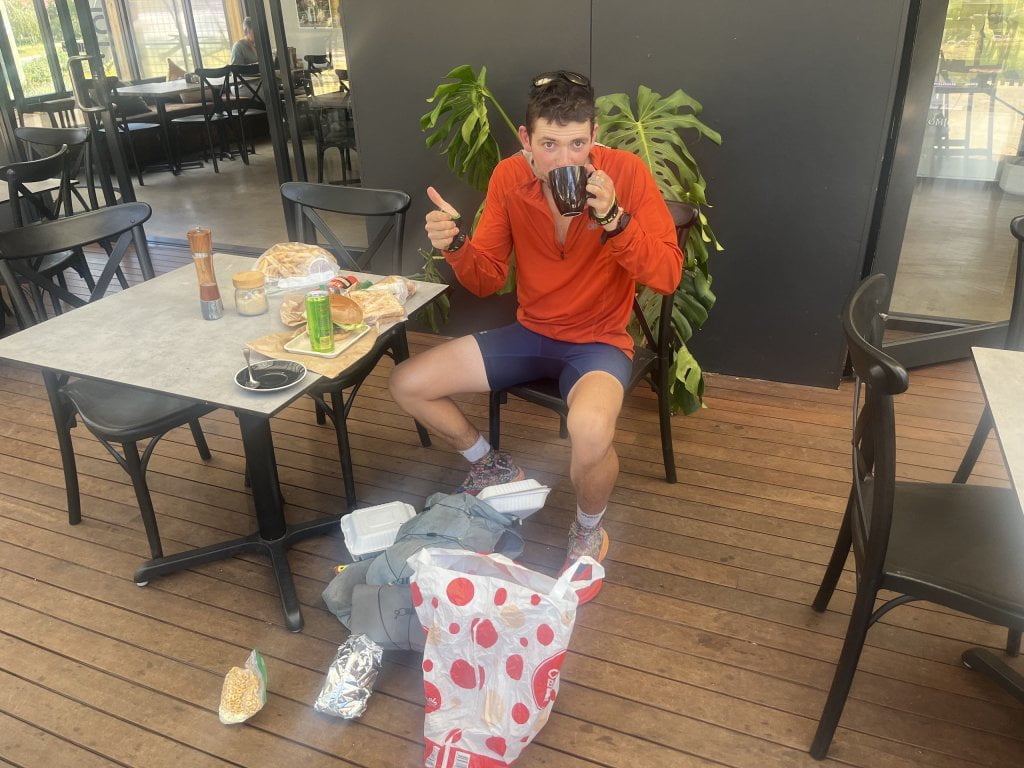


Differences from the AAWT
I thought I might throw this section in for those that were interested in how the Bibbulmun and AAWT compare as FKT experiences. On the Bibbulmun I struggled with the combination of solo walking and long night hours in spring. Despite this, overall the Bibbulmun is much less intimidating. The track is better maintained, less exposed, there are fewer hills, more shelters, towns to walk through, and more hikers. A Bibbulmun FKT is primarily focus on the athletic component. On the other hand, the AAWT requires a broader range of outdoor skills to be successful. I think this is reflected by the fact that both of my attempts are around 11-12 days, but the distance of the tracks differ by around 300km (~ 650km vs 950km).
Which track will be the first to get a sub 10 day self-supported FKT? I’m not sure but I’m certain both are possible.

